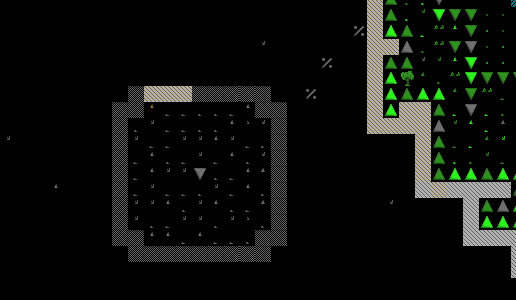

Any dwarf standing on the ice will plunge into the water and drown (unless they have Adequate or better swimming skill, the fall will stun them). In fortress mode, if a frozen murky pool thaws, it will do so instantly. The effects on creatures spawning there are unknown. You can cast ice walls on the edge of the map, however the edge tiles can only be cleared of ice by melting. This means if you're dumping buckets of water off of a 2 Z-level high wall, you will be forming a solid ice roof and the area underneath will be completely ice free, and even safe to walk over as the ice is being cast over their heads.Ĭast ice may "float" entirely unsupported for an extended length of time, however, it will eventually cave-in when support is checked. First the ice floor, and then the ice wall, is cast at the Z-level right below the pond zone. Put your bucket stockpile right next to the water source, and produce a large number of buckets to ensure there is always another bucket to be filled. Note that this is affected by the temperature - for example, water in buckets in a glacier biome will freeze much more quickly than if the same water and buckets are in a cold temperate biome. If the bucketful of water does freeze, just order the ice to be dumped, and the chunks of ice will be taken to your garbage zone. Water in buckets will last for a surprisingly long time before freezing in the bucket as a chunk of ice-it's really not an issue unless the bucket is dropped and left outside. It needs to be underground so it doesn't freeze, but closer means things get cast from ice more quickly. Make your water source as close as possible to the construction site. Subsequent layers require only one bucket per tile (since the ice floor already exists). The first layer of cast ice requires two buckets of water per tile: the first bucket makes an ice floor on the layer below, while the second bucket makes an ice wall on the lower layer and an ice floor on the level above. At that point, you can just delete the zone and the fill pond job goes away on its own. Once any pond zone is completely cast, you will start getting cancellation notifications that they cannot fill the pond.
#Dwarf fortress stairs series
These additional zones can simply overlap each other, or you can separate them into distinct areas, such as a series of 10x1 zones. Only one fill pond job will be created for each pond zone, so multiple pond zones will speed up casting.

Melted ice boulders cannot be used as a water source.Ī boulder of ice is worth 3☼ if traded, and weighs 92Γ.Īn ice bridge cast in place across a chasm.

When an ice boulder melts underground, it becomes an item named "water" that differs from regular water in such fashion: it has no liquid level, does not leave mud when it evaporates, is cyan rather than blue, and dwarves eventually remove it with a "clean" job. It does not appear in any stockpile options or the manager, so it cannot be moved by designating a stockpile, but rather by dumping it. The game refers to ice boulders as "water". Ice cannot be used to craft, nor is it possible to create doors, hatches, and other crafts from it.

by fresh homeotherm corpses in an ice butcher's shop). Ice buildings can be constructed aboveground during freezing weather, though they will melt during the spring/summer thaw, or if their central tile is warmed (e.g. Pillars of ice walls can even be built within rooms that are later flooded with magma (though the walls become "warm", they will not melt).Īttempts to build underground workshops, paved roads, or other non-construction buildings out of ice will usually result in the ice melting immediately, the message "The dwarves were unable to complete the ", and the workshop construction being canceled completely. These constructions are then stable even as temperature rises. It is possible to build constructions out of ice, even underground (provided your dwarves move quickly enough to finish construction before the ice melts). Ice boulders and objects made of ice will melt after some time when exposed to warmer temperatures (such as below ground), giving it rather limited use ice boulders can even melt while being carried by your dwarves, causing them to drop the item and resulting in a smear of water on the floor beneath them. Ice is frozen water, appearing as a light blue stone which can be found by mining through an ice wall (such as that created when a river freezes).


 0 kommentar(er)
0 kommentar(er)
